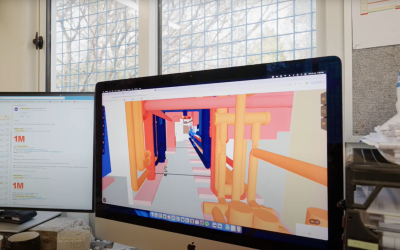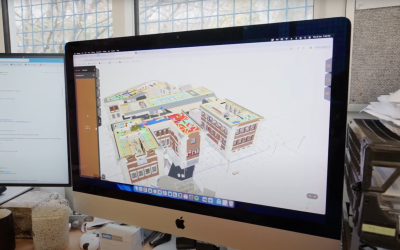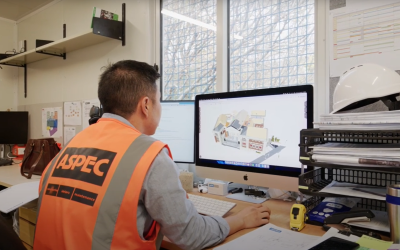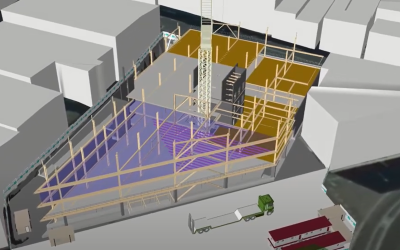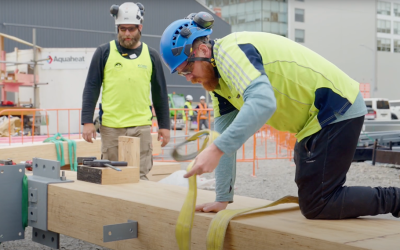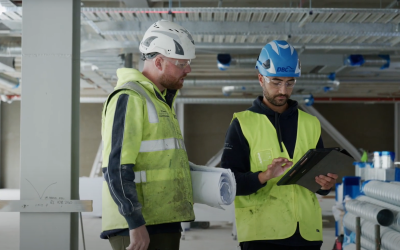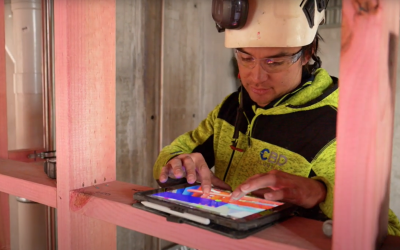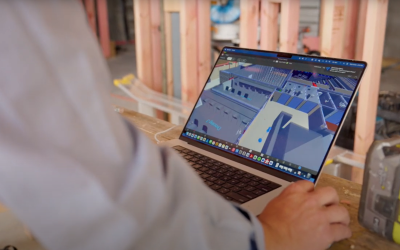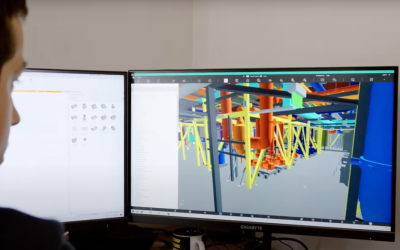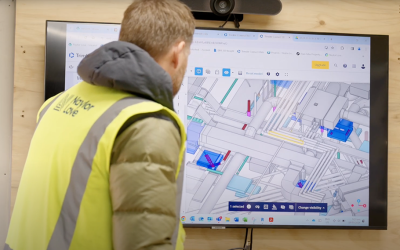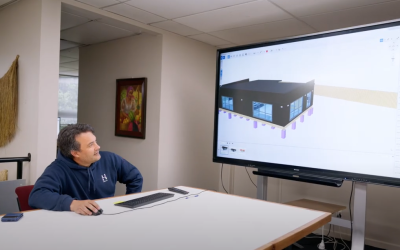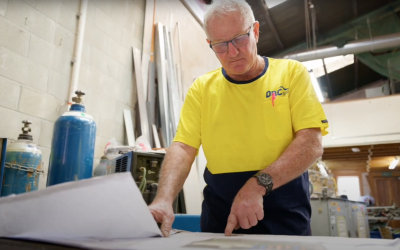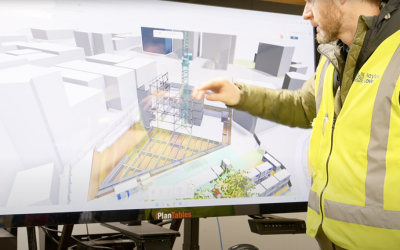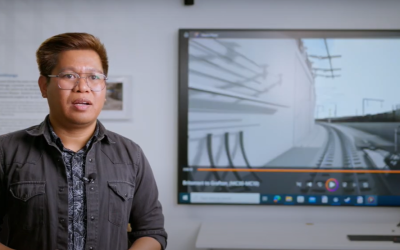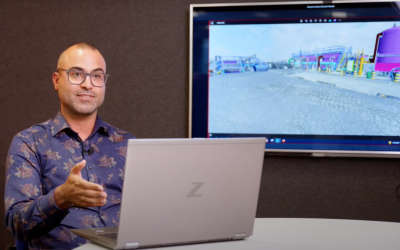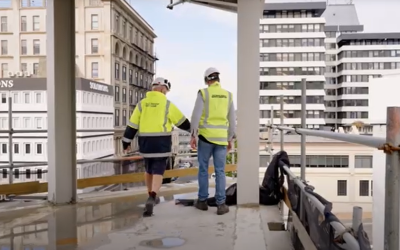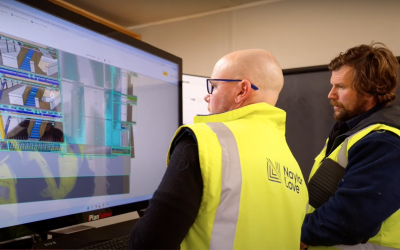Case studies
Our case studies provide examples of BIM in use for health and safety, across a range of projects in New Zealand.
University of Auckland: Using BIM to engage a Facilities Management team in Safety in Design
The Old Choral Hall refurbishment project demonstrates how Building Information Modelling (BIM) can reveal safety issues that might be overlooked in traditional 2D drawings. Through the use of BIM visualisation, the project team identified and resolved a significant maintenance access hazard by relocating a fan unit from a high-risk position to an accessible floor-level location, showcasing the value of BIM in health and safety by design.
University of Auckland: Using BIM for Facilities Management safety planning
On various projects, including the historic Old Choral Hall renovation, the University of Auckland Facilities Management (FM) team has implemented a comprehensive Building Information Modelling (BIM) review process to enhance safety and maintenance accessibility. Using 3D modelling capabilities and regular coordination meetings with stakeholders, the team has brought facilities management considerations into the design review process, ensuring safer and more efficient building operations and maintenance procedures.
University of Auckland: BIM visualisation for Facilities Management
This case study examines how BIM is being used to improve safety in facilities management operations at the University of Auckland, particularly focusing on maintenance access and risk assessment.
ACC Ōtepoti: Use of a 4D animation for planning
The ACC Ōtepoti project team used 4D BIM technology to support their construction safety planning, particularly focusing on structural steel and floor slab installation. By creating an animation of the BIM model visualisation against the project timeline, the team could identify and address potential safety risks months before construction began. This approach helped to clarify problems with the planned sequence of works, enabled better coordination between different trades, and helped create safer working conditions for everyone involved in the construction process.
ACC Ōtepoti & Court Theatre: Use of BIM to improve site safety culture
DBC Building Services used Building Information Modelling (BIM) and advanced manufacturing techniques to improve safety and efficiency in the mechanical services installation for the Dunedin Outpatients Building. Using 3D modelling and direct-to-fabrication processes, the team significantly reduced on-site work at height, improved accuracy, and created a safer work environment.
ACC Ōtepoti: Overlay of BIM model and reality capture using OpenSpace
On the ACC Ōtepoti project, the implementation of OpenSpace BIM+ technology has given the project team a new tool to assist in construction verification and safety monitoring. By overlaying BIM models with reality capture on site, the team can remotely verify installation accuracy, identify potential conflicts, and reduce the need for hazardous physical inspections. This approach improves both construction accuracy and worker safety on the project.
Court Theatre: Creating a culture of collaboration
On the Court Theatre project, the use of Building Information Modelling (BIM) has fostered a more collaborative culture among subcontractors, encouraging them to consider the work of other trades and coordinate their efforts more effectively. By providing a holistic view of the project and enabling better communication, BIM has helped to break down the “first in best dressed” mentality and promote a more cooperative approach to construction delivery, leading to improved safety and efficiency on site.
Court Theatre: Pre-planning for safer work
On the Court Theatre project in Christchurch, New Zealand, the use of Building Information Modelling (BIM) enabled the project team to proactively plan for safer working conditions. By leveraging 3D modelling and collaborative processes, the team identified potential issues early and developed strategies to mitigate risks. This approach led to reduced need for working at height, minimised manual handling, and optimised installation sequences, resulting in a safer and more efficient worksite.
Dunedin Hospital Outpatients Building: Subcontractor modelling and prefabrication
DBC Building Services used Building Information Modelling (BIM) and advanced manufacturing techniques to improve safety and efficiency in the mechanical services installation for the Dunedin Outpatients Building. Using 3D modelling and direct-to-fabrication processes, the team significantly reduced on-site work at height, improved accuracy, and created a safer work environment.
ACC Ōtepoti: Contractor methodology design and hazard ID
On the ACC Ōtepoti project, a 5.6-meter void existed below the service deck on the top floor. The use of Building Information Modelling (BIM) enabled the project team to identify and address potential health and safety hazards associated with wall construction and services installation onto this space. By using the 3D model to facilitate open communication among stakeholders, the team could thoroughly investigate and address potential risks and possible alternatives before construction began, leading to a safer and more efficient building process.
ACC Ōtepoti: Clash detection for safer services installation
On the ACC Ōtepoti project, the use of Building Information Modelling (BIM) and collaborative processes enabled the project team to focus on potential health and safety hazards that could occur during construction and installation of services, particularly in ceiling spaces. Working with a federated 3D model and facilitating open communication among stakeholders, including contractors and subcontractors, the team could thoroughly investigate and address potential risks before and during construction, creating a safer and more efficient work environment.
Helix Global: Prefabricated housing using BIM
Helix Global is pioneering New Zealand’s first fully off-site manufactured residential home. By leveraging Building Information Modelling (BIM) technology, the company has been able to address the unique challenges associated with prefabricated construction, transportation, and on-site assembly. The use of BIM has enabled Helix Global to enhance safety throughout the entire process, from factory manufacturing to final installation.
DBC Building Services: Using BIM to support older workers
In the mechanical services industry, experienced workers like Colin Graham, a contract pipe fitter and welder, are benefiting from the use of Building Information Modelling (BIM) and 3D modelling. These technologies allow older workers to continue contributing their valuable skills while minimising physical risks associated with working on-site. By enabling remote work and prefabrication, BIM and 3D modelling improve safety, efficiency, and knowledge transfer between older and younger workers.
ACC Ōtepoti: Experiences of a new BIM user
On the ACC Ōtepoti project, the introduction of Building Information Modelling (BIM) to a seasoned construction professional with 23 years of experience in traditional 2D environments has demonstrated the significant potential for improving safety planning, communication, and issue resolution. By leveraging the 3D model’s interactive capabilities, the team was able to visualise and address potential safety hazards, plan work methodologies, and effectively communicate complex issues across geographically dispersed team members.
City Rail Link: BIM simulation for driver training
For the Central Rail Link project, the BIM model is used as the basis for a virtual reality fly-through to educate train drivers and communicate project progress to the public. This innovative approach allows drivers to experience and prepare for potential hazards they may encounter during construction, enhancing safety and awareness. The 3D model is updated quarterly to reflect current site conditions, including temporary works, machinery, and permanent installations.
City Rail Link: Virtual reality (VR) worker induction
The City Rail Link (CRL) project in New Zealand has implemented an innovative virtual reality (VR) induction process for workers, leveraging Building Information Modelling (BIM) to create immersive training environments. This approach allows workers to experience and understand potential hazards and safety protocols in a risk-free virtual setting before entering the actual construction site. The VR induction process has proven particularly effective for workers unfamiliar with tunnel environments or those who don’t have English as their first language, ensuring a comprehensive understanding of safety procedures across diverse teams.
Watercare: Creating an information culture around BIM
In this case study, Farzam Farzadi of Beca discusses how Building Information Modelling (BIM) has been implemented on a number of projects for Watercare, a water utility company in Auckland. By embracing BIM as a culture and way of working, Watercare has been able to improve health and safety outcomes, reduce project risks, and enhance collaboration among project stakeholders.
ACC Ōtepoti: BIM in steel design and prefabrication
John Jones Steel has been using 3D modelling technology for over 20 years, with a strong focus on improving health and safety in construction processes. By leveraging Building Information Modelling (BIM), the company has significantly enhanced its ability to design safer construction methods, increase prefabrication, and optimise on-site assembly processes. This approach has led to improved safety outcomes for both workshop and on-site workers, as well as better project deliverables for clients and other subcontractors involved in their projects.
ACC Ōtepoti: Using BIM to test façade installation options
On the ACC Ōtepoti project, the construction team is using the BIM model to support visualisation, planning and communication, and to improve health and safety processes during the façade installation. When challenges arise, team members can use the model to visualise the problem and share information with others, and test possible solutions. Communication and collaboration are facilitated, making it easier to plan safe construction methodologies to mitigate hazards, with clear benefits for improved health and safety management.
ACC Ōtepoti: Contractor use of BIM for communication
Page contents BackgroundVideoApproachOutcomes and benefitsLessons learntBackground“BIM is the best communication tool we have because it breaks down the barriers in understanding.” Matt Soppit, Project Manager, Naylor Love The ACC Ōtepoti project is a new office...

